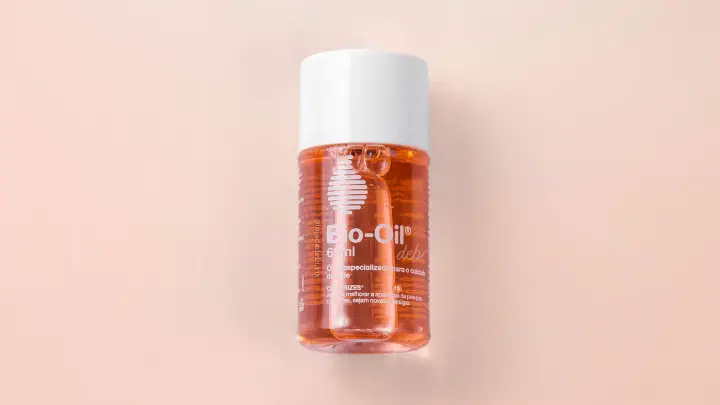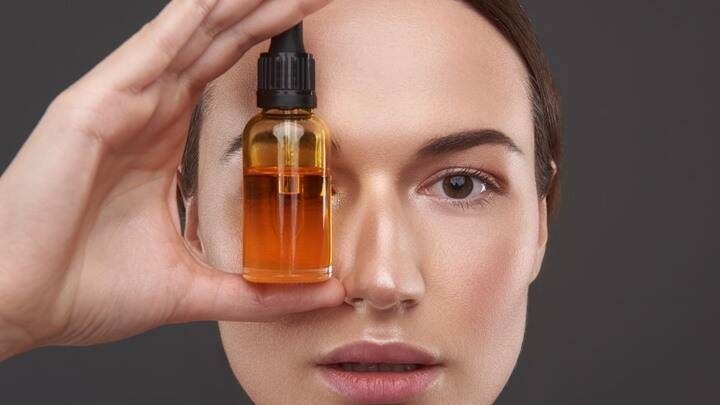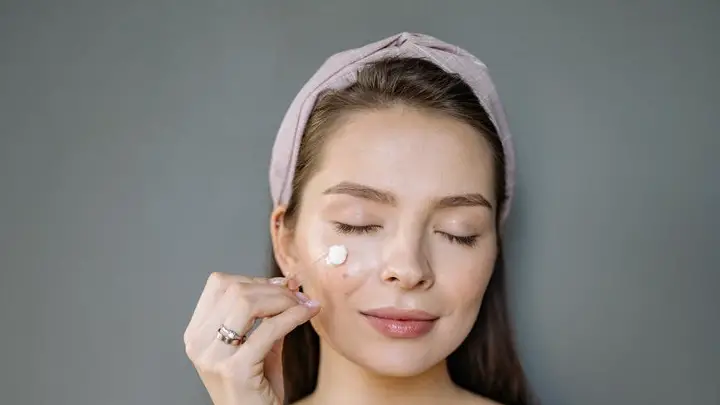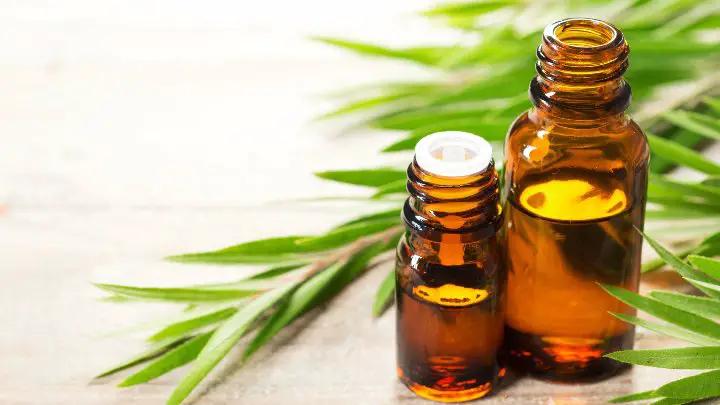Fans of layering skincare ingredients always have questions on what and what not to mix and match. For instance, does face oil and retinol make a good mix and match pair.
Retinol, known for its legendary side effect, must be used with caution. As such, you must proceed to use it with more than just a suggestion from a friend.
Facial oils have carried a reputation of “no-no for skin” until recent proofs validated it as a potent skincare product.
If you want to customize your skincare routine to address specific skin concerns like signs of aging, you most likely need retinol and a moisturizing ingredient like face oil.
Continue scrolling to see why they make a safe pair and how you should use them together.
What Does Face Oil Do for Your Face?
Face oils are usually a mix of different plant-based oils-carrier oils or essential oils. They are packed with nutrients like essential fatty acids, vitamins (antioxidants), and minerals that nourish your skin.
Facial oils fortify your skin by acting as an extra layer of protection over the skin. This layer over your skin keeps moisture trapped and enhances your skin barrier.
More so, it increases your resilience against environmental irritants that can trigger acne breakouts.
The antioxidants present in facial oils help your skin fight off free radicals which can be a result of frequent and prolonged exposure to the sun’s rays.
Furthermore, facial oils are a combination of lightweight oils that do not clog pores. Moreover, oils like jojoba oil have a molecular structure that mimics that of sebum. Therefore, they use this mimicry to regulate sebum production.
Face oils also add shine to your skin while improving skin health and providing cosmetic benefits like enhancing foundation application.
What Does Retinol Do for Your Face?
Retinol is a legend for causing your skin to dry out, yet it is a great ingredient to keep your face youthful. Retinol, vitamin A, is a gentle exfoliating vitamin that helps to improve the appearance of aging skin.
As retinol exfoliates your skin, it sloughs off the dead skin cells that can cause trans epidermal water loss and leave your skin dehydrated and exposed to the formation of fine lines and facial wrinkles.
Retinol is one ingredient that penetrates deep into your skin and works in the dermis layer of your skin. There, retinol inhibits the action of enzymes that can degrade collagen and elastin. It enhances the synthesis of these proteins that promote skin elasticity.
In addition, retinol fights off the formation of free radicals that can alter skin texture and lead to the formation of acne and dark spots.
Therefore, retinol is an effective ingredient for treating signs of aging, acne and its scars, dark spots from hyperpigmentation, and exfoliating skin to reveal a brighter complexion with a natural glow.
Can You Use Face Oil With Retinol?
Yes, you can use face oil with retinol. Essentially, both ingredients can address the same skin concerns in your skincare routine.
Face oils are exceptionally moisturizing (almost like moisturizers but they are not moisturizers). Retinol, on the other hand, is quite tricky. While treating your skin concerns, it dries out your skin. This makes them a good pair for your skin.
For instance, if you’re looking to use retinol to treat aging, you need a face oil to prop up retinol. Retinol is more effective and yields better results when used with a moisturizer. And facial oils are very moisturizing.
Additionally, both ingredients can penetrate your skin and provide moisture from within. Face oils contain essential fatty acids like linoleic acid and oleic acid which help to enhance the lipid barrier, protecting your skin.
Retinol penetrates your skin, mildly exfoliates dead skin cells, and regulates sebum production. A functioning lipid barrier and steady sebum levels with a burst of hydration can help control and treat acne breakouts.
Face oil and retinol work together to heal acne and fade away scars. Overall, they promote skin elasticity and youthfulness.
Can You Mix Facial Oil With Retinol?
Yes, you can. To mix face oil with retinol, you should carefully select an oil that perfectly suits your skin and will not cause irritations.
Originally, retinol will irritate your skin. So, mixing it with an oil that does not suit your skin will only aggravate what you should be treating.
When you want to mix face oil with retinol, make sure you use essential oil that has been diluted with a base oil or carrier oil. For instance, lavender essential oil and tea tree essential oil should be mixed be oils like jojoba oil, coconut oil, or argan oil.
Moreover, you may mix retinol with only a carrier oil. Watermelon seed oil is a good carrier oil to mix with retinol cream before applying it topically. This mix and match pair makes a good acne treatment.
Watermelon seed oil is known for its high linoleic acid concentrations which help to unclog pores and regulate sebum synthesis. Additionally, it is lightweight and has anti-inflammatory properties to soothe and prevent redness.
Mixing retinol with oil serves a lot of purposes but two are very essential; the oil makes retinol tolerable on your skin and it helps to lock in moisture, preventing retinol from evaporating and drying your skin.
Can You Use Face Oil With Retin-A?
Tretinoin is the retinol form in Retin-A. Topical application of tretinoin can dry out your skin and cause flaking and peeling. Layering facial oil with a Retin-A cream will reduce this effect.
Furthermore, the oil, a moisturizing agent, will help to seal in hydration and keep tretinoin from drying out your skin.
Like retinol, that it is, tretinoin penetrates deep into your skin to address acne. It is better to use it with an oil to protect your skin from excessive irritation and skin purging that is accompanied by acne breakouts.
Can You Use Rosehip Oil With Retinol?
Rosehip oil is a carrier oil that reportedly contains tretinoin (retinoic acid), a converted form of retinol. This acid is present in very small amounts but is potent enough to make rosehip oil a great anti-aging oil.
Also, for this reason, there are a lot of concerns about using rosehip oil with retinol. Nonetheless, rosehip oil and retinol can be used together to treat aging and acne.
The retinoic acid concentration may not always be harsh on every skin type. The first step of the oil is to soothe retinol and lock in moisture. In tandem, they stimulate collagen synthesis and improve the overall appearance of your skin.
However, this pair may not be good for every skin type, especially sensitive skin, but you do not have to ditch it. a better way around it is to alternate both ingredients.
How to Layer Facial Oil With Retinol
Layering skincare ingredients must be rightly done to make each ingredient effective and work unhindered. Before you layer face oil with retinol, you must have picked a face oil that suits your skin and a retinol cream or serum.
- Start with facial cleansing. Soak a clean cotton ball with a mild cleanser and wipe your face and neck to remove oil, dirt, grime, and makeup residue
- Thereafter, you may double cleanse and restore pH balance with a face toner
- Dampen another cotton ball with toner and wipe your face, and neck
- Afterward, apply face serum (for instance, hyaluronic acid)
- Pump out the serum and release some drops onto your palm, gently tap the serum all over your face including your undereye and neck
- Hold on for some seconds into a minute so the serum can absorb into your skin
- Then, apply moisturizer to your face to seal in hydration and the active ingredients in the serum
- It’s time for retinol. Take a pea-sized amount of retinol cream and gently rub it into your skin in circular motions
- Allow the cream to absorb into your skin until you can no longer see the product
- Thereafter, apply face oil all over your face to lock in moisture and prevent the cream from drying out
- Finish your routine with a broad-spectrum sunscreen to shield your skin from UV rays (if it’s your AM routine. Otherwise, finish your routine with face oil)
In addition, you may mix retinol cream with moisturizer and apply it after the serum. Also, if your skin is new to retinol, you may want to start slowly by using it every other day before progressing to once a day and then, twice a day.
How to Use Retinol Facial Oil
Retinol facial oil is a more moisturizing alternative for using retinol as part of your skincare routine. This vitamin A derivative is best delivered through oils; it is more tolerable.
This way, every skin type, including sensitive skin, can benefit from retinol and bypass the common drying effect.
Generally, oils are moisturizing, lock in moisture, and are a good addition to the treatment of almost any skin condition. Comparably, they do the same when mixed with retinol and render retinol more effective.
Retinol facial oil in your regimen will change the order of application of skincare products. Your retinol facial oil will come as the last step of your routine because it is an oil. This facial oil is exceptional for dry and sensitive skin types.
It is highly hydrating and has great anti-inflammatory properties which is a very important feature of skincare products for sensitive skin.
In addition, retinol facial oil is best used at night, away from sunlight. Retinol naturally makes your skin photosensitive, so, it is best to protect your skin and use it when you’re away from exposure to sun rays.
But if you use it during the day, layer a broad-spectrum sunscreen to shield your skin from damage.
FAQs
Should you use face oils before or after retinol?
Use face oil after retinol cream. Face oil can penetrate retinol cream but not the other way around. Oils create a film over your skin that locks in hydration and other products cannot penetrate it.
What should you not use with retinol?
Benzoyl peroxide, vitamin C, alpha, and beta hydroxy acids do not go well with retinol. Layering or mixing retinol with any of these ingredients will cause your skin to dry out. Consequently, it leads to peeling, redness, and breakouts.
You can use retinol and any of these ingredients in your routine on separate days and at different times of the day.
Can you use facial oils with retinol at night?
Yes, you can. It is recommended that you use retinol at night to avoid the sensitivity UV rays cause. Also, at night, your skin enters a state of self-repair, and this makes it a good time for retinol to carry out its anti-aging assignment.
Conclusion
Can you use face oil with retinol? Yes, you can, and it makes a perfect match to make retinol tolerable and more effective.
Seeing retinol on any ingredient list can give you chills. Retinol is very effective, but its drying effect is quite scary, and many people have given up on using it to treat their skin and revive it to its youth.
Retinol should not be used without a moisturizer; it is risky. If you have face oil somewhere on your dressing table, it’s about to get better for your skin. Face oil is a good moisturizing and hydrating agent, so, it pairs well with retinol.
To make both ingredients effective, do not use essential oils with diluting them, and be sure the oil you picked suits your skin type.
Thanks for reading.
Serum101 provides related articles that answer your questions on mixing and matching skincare ingredients.







